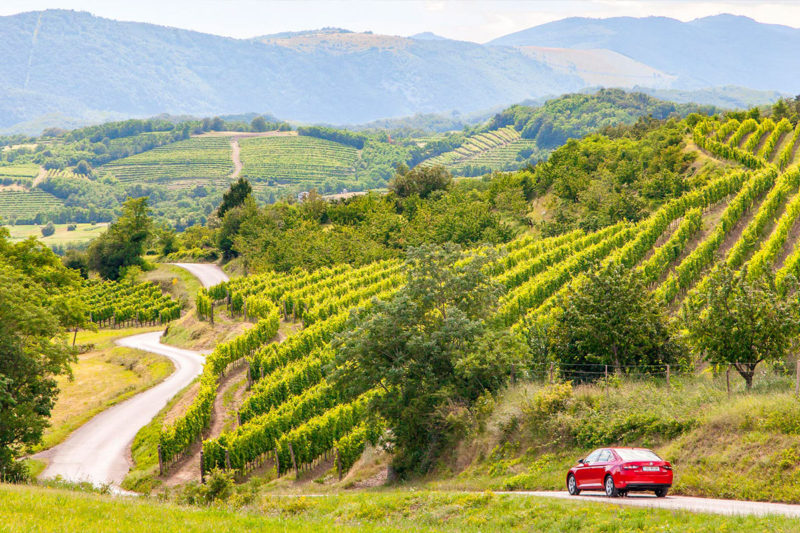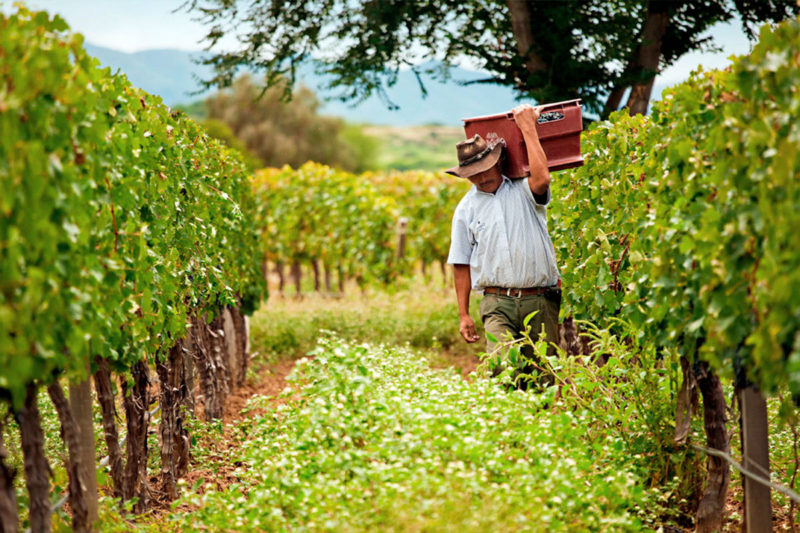As new wine regions appear, so do new generations of wine drinkers looking for new destinations that depart from the traditional.
Here are 3 options that point in that direction and that you could visit this 2023.

Vipava Valley, Slovenia
The influence of Italy and Austria are strongly felt in Slovenia. The Vipava Valley, located between the Adriatic Sea and the Alps, stands out for the great quality of its wines. It has many organic vineyards and is an excellent destination for tasting the region’s popular orange wines made from local indigenous grapes such as zelen and pinela. Explore vineyards by bike or car, riding through the vineyards, catching glimpses of Medieval castles, and enjoying fine cuisine along the way.
Where: 50 kilometers from the Slovenian capital, Ljubljana.
How to Get There: Less than an hour by car from Ljubljana.
Bío-Bío, Chile
Southern Chile began making news in the wine world about a decade ago, and it has since become established as an outstanding New World terroir. The Itata Valley is one of the country’s oldest wine regions, with nearly 500 years of history. The país, moscatel, and cinsault varieties that have been grown there for centuries have recently received renewed attention thanks to careful vinification to produce unique and exceptional world-class wines such as the Marques de Casa Concha Cinsault Rosé (Itata Valley D.O.). A little farther south, in the Bío-Bío Valley, soils of volcanic origin and the cold climate enable inimitable expressions of varieties such as pinot noir, chardonnay, riesling, and sauvignon blanc. The Marques de Casa Concha Edición Limitada Chardonnay (Bío-Bío D.O.) is an excellent example from this zone. The local scenery will leave you breathless—the dry-farmed vineyards planted as bush vines in the coastal secano on the slopes of the Coastal Mountains in a zone where rural traditions are deeply rooted.
Where: 500 kilometers south of Santiago, the capital of Chile.
How to Get There: Approximately 5 hours from Santiago by car, bus, or train from Santiago.

Tarija, Bolivia
Also in South America, although far less known than Chile, Bolivia appears as a novel New World destination for 2023. 80% of the country’s wines are produced in the Tarija Valley, thanks to its Mediterranean climate. These are wines made with grapes grown 1,800 meters above sea level are part of a tradition that’s at least 400 years old, although the production of its modern wines actually began in 1993. Although Bolivians love the sweetness of wines made with moscatel de alejandría, modern wineries stand out for the production of fruity reds such as tannat, cabernet sauvignon, and malbec, including some that are even at the level of Argentine wines. September is an excellent time of year to visit due to the enjoyable spring weather and the celebration of the mystical Fiesta Grande de Tarija.
Where: 665 kilometers from the Bolivian capital, La Pal.
How to Get There: flights are available from La Paz, and the duration is 2 hours.




